The patient, a woman in her late 50s, had been a regular attender to the practice since joining in 2004. However, after the death of her husband in 2021, there had been a decline in her wellbeing and she had not received any dental care in the intervening three years. As well as experiencing discomfort, the patient was very anxious about her visit, and had fears about receiving treatment.
Assessment and diagnosis
In June 2024, the patient was given an emergency appointment to address swelling accompanied by severe dental pain. Upon examination, it was established that the patient had an abscess in the UL6. There was very little remaining of the tooth, and it required urgent care.
Emergency treatment
The patient was presented with three options. Doing nothing was not a viable option due to the risks to the patient from the infection. The second was to extract the tooth and replace it with an implant-retained restoration. The third, was to provide emergency RCT and attempt to save the tooth.
After explaining the options to the patient, she consented to emergency treatment and follow-up RCT. The UL6 was then excavated, and the blood vessels were removed from the tooth. The decay was removed, and access was cleared to three canals.
Coronal flare treatment was implemented to enlarge the coronal third of the root canal to minimise coronal interferences during subsequent treatment with NiTi fi les. The tooth was then dressed with a dental cement containing antibiotics, anti-inflammatories and steroids, as well as an anti-fungal treatment to temporarily seal the root before extensive RCT could take place.
At this appointment, the tooth was built up using Brilliant EverGlow composite to allow the application of a rubber dam in future appointments.

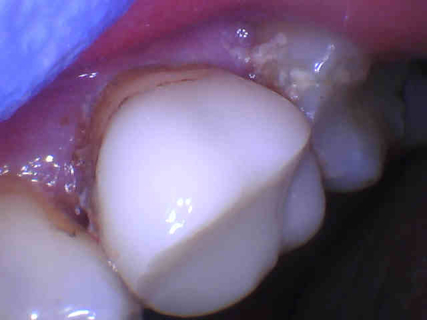
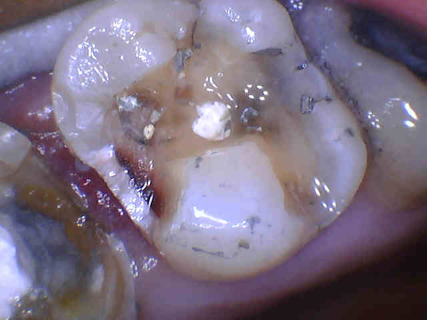


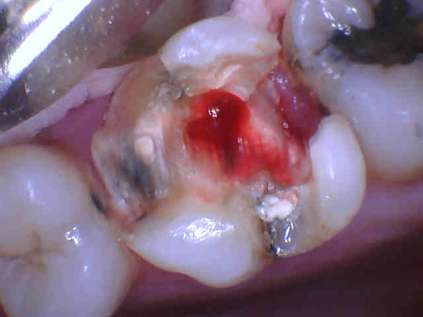
Treatment planning following emergency treatment
The patient returned the following day for a full consultation. She was in pain, and still had some swelling which was quite difficult to manage. She was prescribed amoxicillin and metronidazole, an antibiotic and anti-protozoal medication, which can be highly effective in the treatment of dental abscesses.
The patient disclosed that she had not undertaken a routine medical check in some years and, as the patient was 59 years old, she was referred for a systemic health assessment to rule out any underlying conditions, like diabetes or cardiovascular disease.
She was then treated in three appointments to reduce her swelling and complete the RCT treatment. The HyFlex OGSF system from Coltene was the instrument of choice, in this case. The Opener (red) and Shaper (yellow) files were of particular use in accessing, cleaning and shaping the canals, irrigating between every file. Photo assisted laser irrigation, and disinfection with the use of a diode laser were also used in this case.
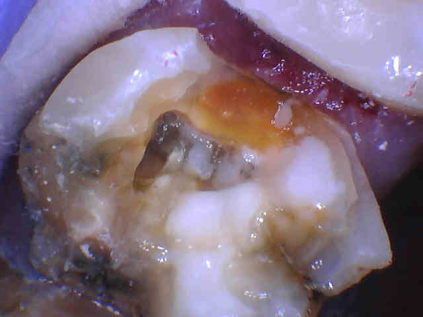
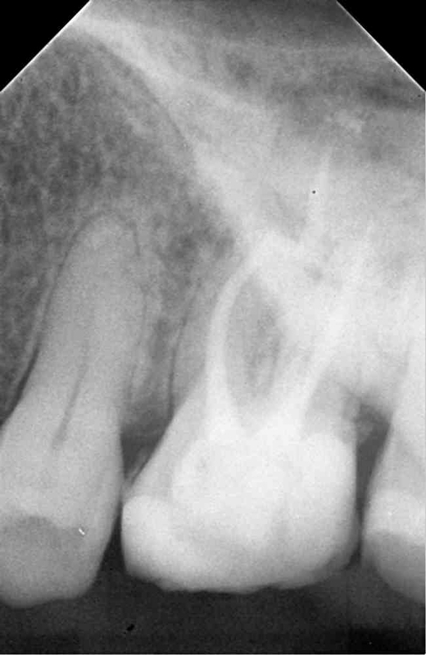
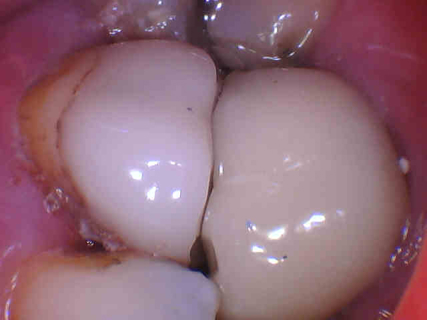
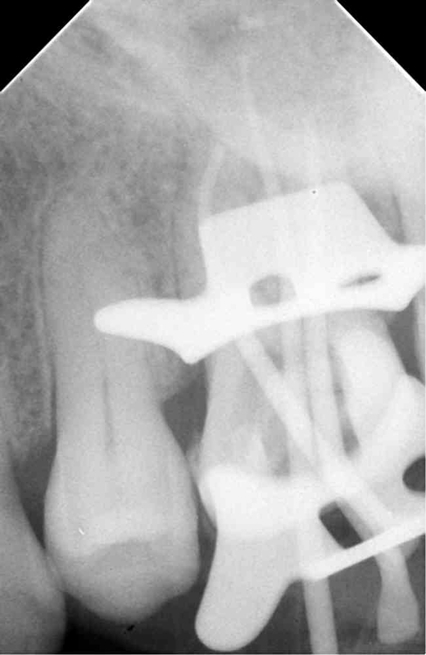
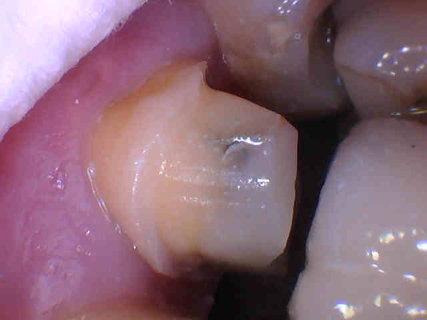
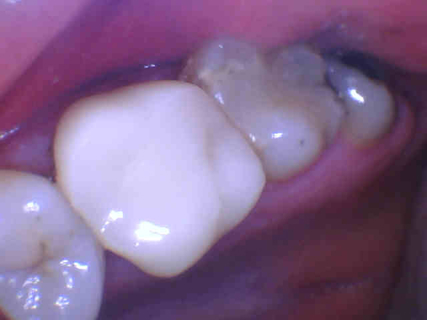

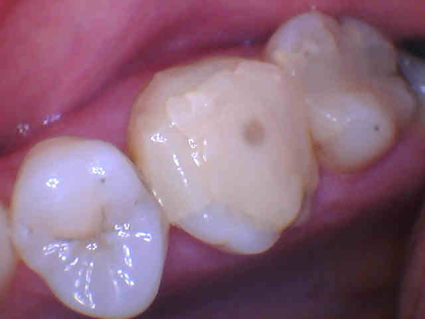
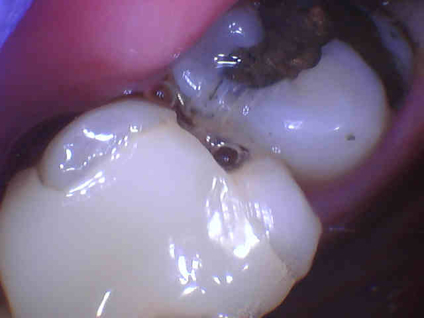
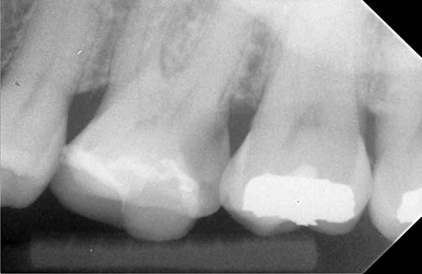
Restorative treatment
The tooth was restored with a fibre post, and the use of EverGlow composite from Coltene. The patient received a ceramic crown, which was fabricated chairside using Brilliant Crios, a reinforced composite from Coltene.
Some additional decay was present in the patient’s UL7, and this was treated and subsequently filled with Brilliant EverGlow composite.
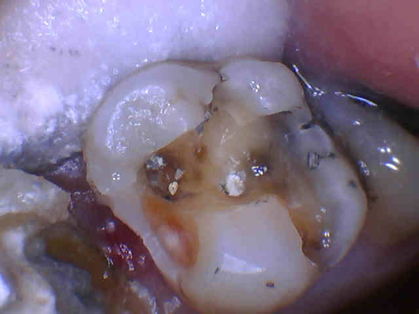
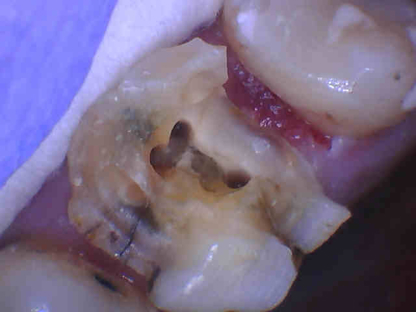

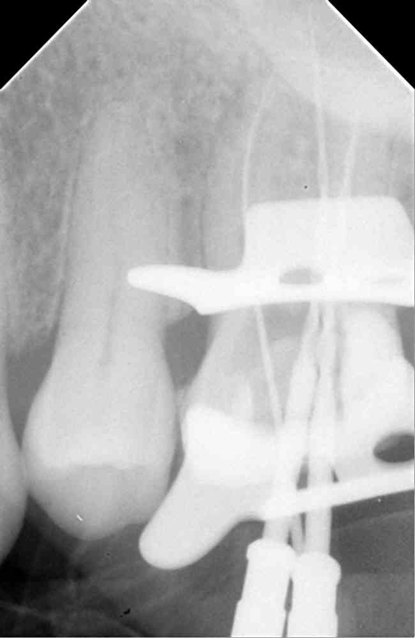
Treatment outcome
After treatment, the swelling was finally controlled, the crown was successfully placed, and the tooth remains asymptomatic. The patient and I are both very happy with the outcome.
Learning points
The patient’s infection and decay were extensive, and some clinicians might have considered the tooth to be untreatable.
Immediately removing the tooth from the bite was instrumental in preventing the tooth from breaking. As there was so little tooth left, building the tooth up gradually immediately after emergency treatment enabled us to use a rubber dam, and maximised the viability and restorability of the patient’s tooth. This meant the patient didn’t have to undergo implant treatment.
The benefits to the patient of using Brilliant Crios from Coltene was that she didn’t have to wait long for her restorative treatment, so the risk of tooth fracture was further reduced. The Cerec CAD/CAM milled crowns fit very precisely, and the clinician is completely in control of the manufacturing process as well as the chairside workflow. I have been very impressed by Brilliant Crios. They are highly polishable, they don’t need to be etched like dental ceramics and so are much easier to use chairside.
I have been experiencing the benefits of Coltene HyFlex NiTi files for more than five years, and find them very efficient. Since utilising the OGSF system, I have experienced very few breakages during treatments. They navigate around curved canals, and are flexible which makes them more durable. I recommend them for their strength and cutting efficiency.
I have been using Brilliant EverGlow composite for a very long time. The shade of the tooth shines through very well. It’s highly aesthetic and there is very little post-operative sensitivity, so there is far less call to replace or repair them.
For more information visit www.coltene.com/


